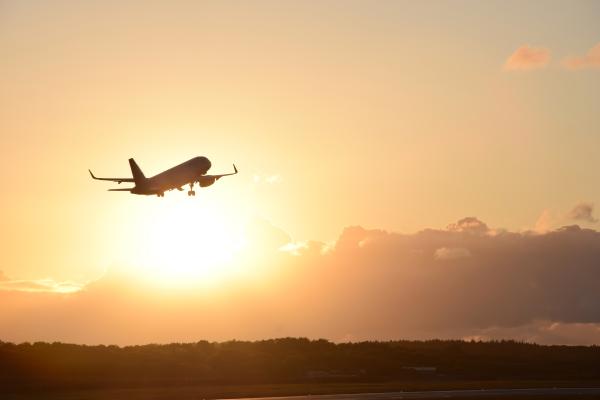
Traditionally designed for efficiency and safety, passenger planes are now increasingly being developed with climate neutrality in mind as well.
So the question arises: will people one day be able to count on flying from Paris to New York in less than an hour without contributing to global warming?
Sky-high ambitions
That’s what the EU-funded STRATOFLY project proposed: a Mach 8 airliner – a hypersonic aircraft that can go at least 9 500 kilometres per hour, or about eight times the speed of sound. STRATOFLY, which ran from 2018 to 2021, built on three previous EU research projects in the field.
"It's going be a real challenge,’ said Nicole Viola, who coordinated STRATOFLY and is a professor at the Polytechnic University of Turin in Italy. ‘Maybe we're not ready yet for Mach 8 right now. But I'm sure that I will see a hypersonic airliner in my lifetime."
STRATOFLY designed a prototype in the form of a computer model for a hydrogen-fuelled hypersonic plane. The project focused on innovative ways of powering an aircraft able to carry 300 passengers.
In the meantime, the political appetite in the EU for supersonic passenger air travel has waned in large part because of environmental concerns, not least noise and emissions of pollutants that cause climate change.
Recent EU regulatory initiatives, including a new law to cut aviation emissions, have highlighted the political scepticism in Europe by limiting incentives for supersonic commercial flights.
Still, in the worlds of civil aviation and research, ambitious ideas persist to make faster and cleaner aeroplanes. While these technologies might take many decades to enter service, it’s important to dream big now, according to scientists.
The EU is funding numerous research initiatives covering a range of fundamental technologies, including hydrogen-related ones, to make aviation safe, efficient and clean. The goals are aligned with national, international and business priorities.
Not so fast
The STRATOFLY design came with plenty of technological challenges. But one of the biggest sticking points wasn't so much to create an aircraft that could fly fast but rather to design one that could also fly slowly.
‘The challenge isn't in the hypersonic phase,’ said Viola.
The hypersonic airliner that she and her colleagues dreamed up would need not only to fly at high speeds but also to take off and land at much lower velocities.
This produces design challenges. An engine capable of hypersonic speeds, for example, isn't the best option for lower speeds. A hypersonic engine also needs a huge inlet to “breathe in” air, which gets mixed with hydrogen.
‘As the speed grows, the inlet grows as well,’ said Viola.
But at a lower speed, less air needs to get sucked into the engine. This requires scientists to make a compromise in the design.
The 94-metre aircraft contains a massive inlet in the nose, with sliding doors to regulate the air intake.
From take-off to a speed of around 5 000 kilometres per hour, six smaller engines do all the work. Above that velocity, one massive engine extending along the tail thrusts the aircraft forward.
Beyond questions of pure design, STRATOFLY demonstrated the advantages of exploiting liquid hydrogen instead of hydrocarbon as an aircraft fuel.
Back to the future
The STRATOFLY proposal is only a concept designed to demonstrate what a hypersonic airliner could look like. It allows researchers to test and think about new technologies that might take decades to build successfully.
Today, however, the aviation industry might be returning to supersonic airliners like the famed Concorde, which was in service for more than 30 years before being retired in 2003. Used by Air France and British Airways, the Concorde was best known for its Paris-New York and London-New York routes featuring one-way travel times of three to three-and-a-half hours.
Boom Aerospace, a US company, has already signed contracts on supersonic design with United Airlines and American Airlines.
And hypersonic flight is attracting attention beyond civil aviation. The space industry is eyeing the technology to build craft that can take off like a plane, a development that could reduce the need for expensive rocket launches.
"Hypersonic is somewhere between aviation and space,’ said Viola. ‘So, eventually, we will see one of those fields take up the technology."
MORE INFORMATION
This article is an abridged version of an original article by Tom Cassauwers published in Horizon, the EU Research and Innovation magazine.
- Reference
- SOCIETAL CHALLENGES - Smart, Green And Integrated Transport
- Project duration
- 1 Jun 2018 - 31 May 2021
- Project locations
- ItalyNetherlandsGermanyFranceSwedenSpainBelgium
- Overall budget
- €4 000 000
- EU contribution
- €4 000 000100% of the overall budget
- Project website
- https://www.h2020-stratofly.eu/
